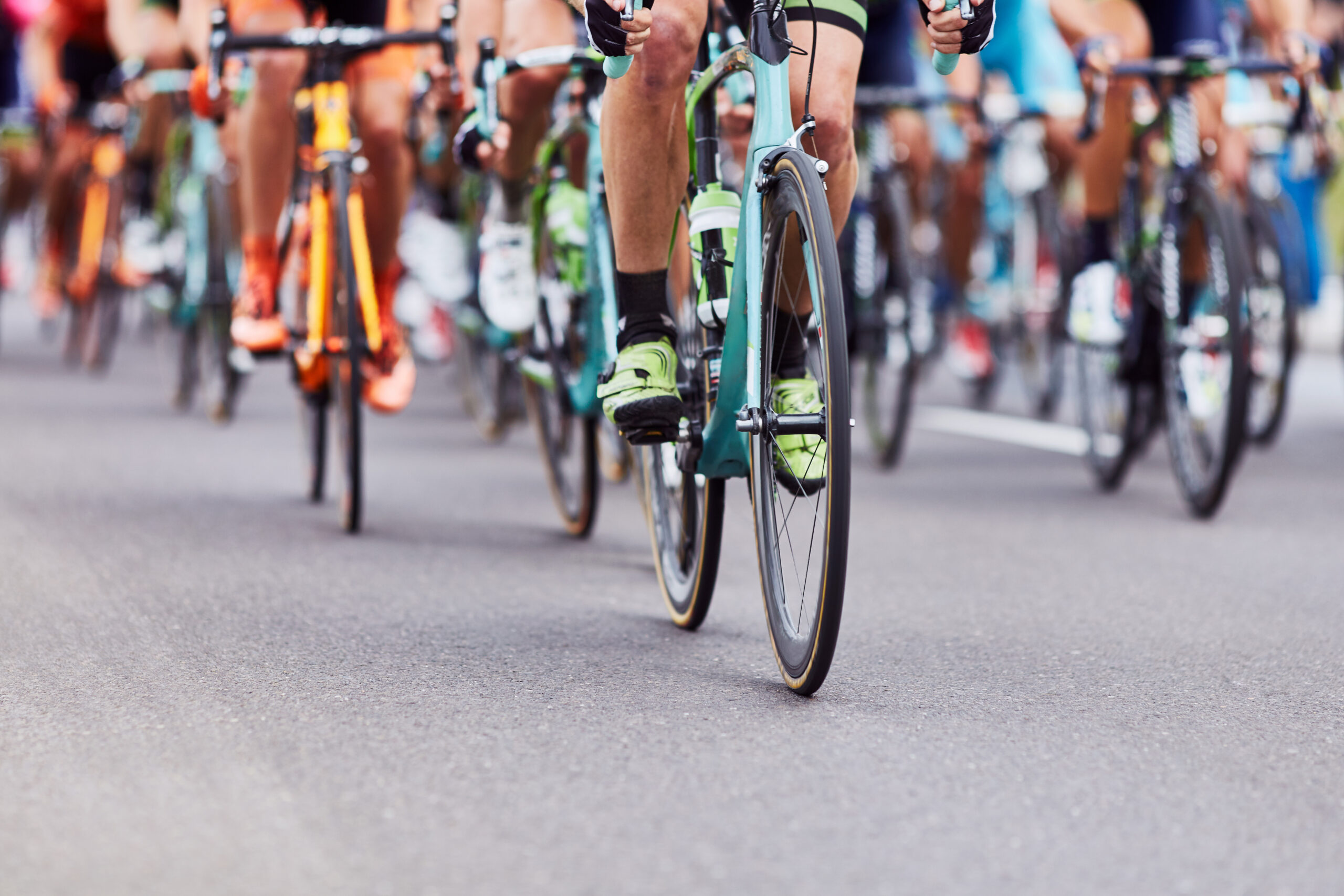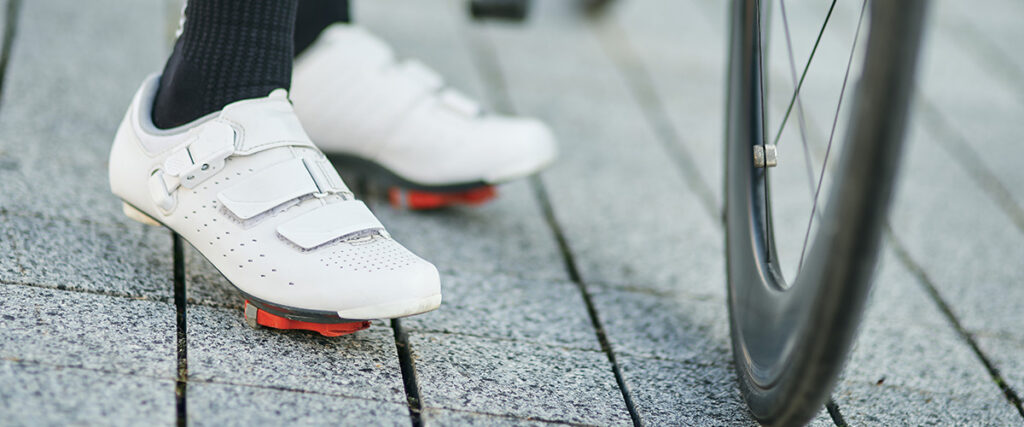Cycling and Foot Health

Introduction:
According to the statistics cited from cyclinguk.org, approximately 5.03 billion miles were cycled in 2020 alone, a staggering increase of almost 35% on the previous annual average and while the community of cyclists continue to grow, significant attention on its effect on foot health is most certainly warranted. As foot injuries reported include descriptions of foot numbness, metatarsalgia, achilles tendonitis and plantar fasciitis (3, 2, 4).
A study conducted in 2012 noted over half of its test group reporting foot pain whilst cycling with forefoot pain being the highest reported location. Pain typically denoted as ‘burning’ and ‘numbness’ was found to be eased by stopping for small periods, removing footwear, gentle walking, massage and/or stretching. More importantly, the group at greater risk were cyclists using an attached foot-pedal, or clip-less pedal, interface. Not surprising as this interface facilitates energy transfer from cyclist to bicycle (5).
As well as the foot-pedal interface, another area of key focus should include your posture or fit on the bike. We will delve deeper into both areas in order to develop a sound understanding and improve foot health and conversely cycling performance and enjoyment.
Footwear & The Foot-Pedal Interface
Issues relating to foot pain whilst or after cycling for any period of time, are generally correlated to wearing inappropriate footwear. Now most issues will arise as the cyclist pedals down, where gravity alone will see to toes slide towards the front of the shoe. This often leads to painful nail trauma and possible irreparable damage to the nails, if shoes are too big or too small. Curved or involuted nails may even become ingrown and infected. If the damaged and detached nails are accompanied by athlete’s foot, one could quite easily develop a fungal nail infection, which require quite extensive treatment. When shoes are too big, burning sensation and blistering may occur due to the friction generated at the balls of the feet.
If footwear is too narrow, the fore foot or balls of the feet will become quite squashed. When this the case, such cyclist may complain of a sharp, stinging or burning pain between the toes, swelling, tingling and numbness. These symptoms can indicate a Morton’s Neuroma or Metatarsalgia where tingling and numbness is absent.
Cycling Footwear: What is best?
It is recommended that shoes have adequate wiggle room for the toes with a secure fastening/lacing structure for mid-foot. If you enjoy the occasional bike ride, normal trainers suitably fitted as discussed, should be adequate. When cycling becomes more than just a hobby, clip-less pedal or cycling specific shoes offer more comfort and improved performance (1). Specially made orthotics may also be included to prevent any biomechanical shortfalls, facilitating a smooth and pain-free pedal stroke.

Cleat Positioning and Bike Fit
Injury prevention when cycling can be achieved when particular attention is paid towards the bicycle fit and alignment, proper rider position and pedalling mechanics (6). The bicycle fit and alignment should be as simple as buying the correctly sized bicycle based on your height and leg length. The proper rider positioning can be sought by booking an appointment with an experienced bike fitter, where adjustment to saddle height and handle bar positioning can be done to develop your most suited riding style.
If you have taken the plunge on using clip-less pedals, one must ensure the cleats are secured in the correct position. Incorrectly place cleats can have an adverse effect on not only the feet, but can also introduce knees pain. It is highly recommended that you ask a professional to adjust the cleat positioning, as any mis-alignment can have potentially adverse effects.
Conclusion:
So the jury is out, cycling will in fact have an effect on your general foot health. The great news is that simple steps can be taken to minimise, if not eliminate, the associated conditions that may develop. To start, be sure you have the correct size bike, as this will affect your riding position. Also wearing the appropriately sized and securely laced footwear must be considered, and in isolated cases it is recommended that one seeks medical advice before taking on cycling adventures.
When cycling is more than just a hobby, cycling specific shoes with the correctly aligned cleats will offer both health and performance advantages. In addition to that, visit an experienced bike fitter to ensure a correct cycling posture.
Now armed with this information, happy and healthy riding to all.
References:
(1) Burns, C and Kram, R. 2019. The effect of cycling shoes and the shoe-pedal interface on maximal mechanical power output during outdoor sprints. Footwear Science, 12(3): 185-192.
(2) Gregor, R and Wheeler, JB. 1994. Biomechanical factors associated with shoe/pedal interfaces: Implications for injury. Sports Medicine, 12: 117-131.
(3) Mellion, MB. 1991. Common cycling injuries: Management and prevention. Sports Medicine, 11: 52-70.
(4) Sanner ,WH and O’Halloran, WD. 2000. The biomechanics, etiology and treatment of cycling injuries. Journal of the American Podiatric Medical Association, 11: 354-376.
(5) Uden, H; Jones, S and Grimmer, K. 2012. Foot Pain and Cycling: a survey of frequency, type, location,assosiations and amelioration of foot pain. Journal of Science and Cycling, 1(2): 28-34.
(6) Wanich, T; Hodgkins, C; Columbier, JA; Muraski, E and Kennedy, J. 2007. Cycling Injuries of the Lower Extremity. Journal of the American Academy of Orthopaedic Surgeons, 15(12): 748-756.

Thank you for sharing this article with me. It helped me a lot and I love it.
Very delighted that you’ve found benefit in the article, happy cycling!